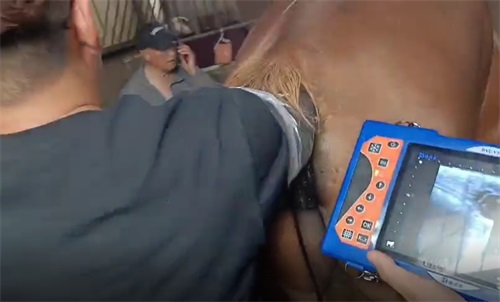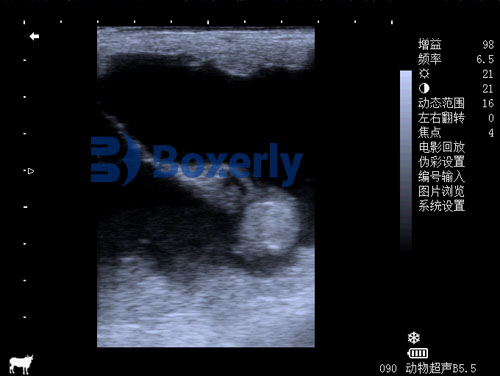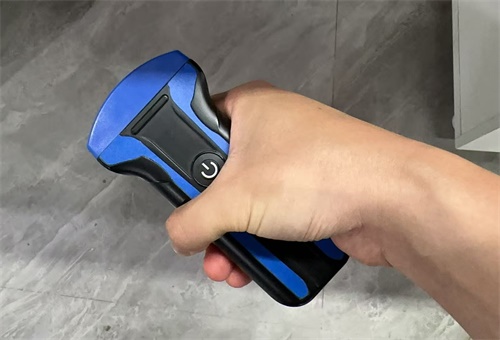There’s something incredibly humbling about watching life grow, especially when it’s inside a mare you’ve raised from a foal. For horse breeders and farm managers, keeping a close eye on a mare’s pregnancy isn’t just a matter of curiosity—it’s about ensuring the safety of both mare and foal. One of the most powerful tools we now have to support healthy equine pregnancies is portable ultrasound. Specifically, it's being used to monitor fetal heartbeats, and farmers around the world are embracing it for good reason.

Why Fetal Heartbeat Monitoring Matters
Let’s face it: horses aren’t small animals. When something goes wrong during pregnancy, it can be emotionally and financially devastating. Stillbirths, late-term abortions, and weak foals are not uncommon in the horse world. That’s why catching warning signs early can make all the difference.
Monitoring the fetal heartbeat gives us real-time reassurance that the foal is alive and developing normally. A steady, strong heartbeat indicates the fetus is getting sufficient oxygen and nutrients. A weak or irregular one, on the other hand, might point to stress, infection, or placental problems that need immediate attention.
How Portable Ultrasound Changed the Game
Not that long ago, scanning a pregnant mare meant hauling her to the vet clinic or bringing in a specialist with bulky equipment. That’s fine for big operations with unlimited resources, but what about the smaller breeding farms?
Today’s portable ultrasound machines have made things radically easier. These handheld or tablet-sized devices are light, durable, and battery-powered. A trained farmworker or equine vet can carry one into the barn and get clear, real-time images of the uterus, placenta, and fetal heartbeat—no need for sedation or fancy setups.
It’s especially useful for checking mares in late gestation, when the risk of abortion or fetal compromise tends to spike. Using the machine regularly gives a running record of how the fetus is progressing, and whether there’s any reason to intervene or adjust the mare’s care.
What a Normal Fetal Heartbeat Looks Like
A healthy fetal heartbeat in a mare usually starts showing up clearly on ultrasound by day 25 to 30 of pregnancy. In early stages, it may flicker rapidly—often around 120 to 180 beats per minute. That’s normal. As the pregnancy progresses, the rate slows slightly but remains much faster than the mare’s own resting heart rate.
What we’re watching for isn’t just the number of beats per minute, though. We’re looking for consistency, rhythm, and strength. Is the beat steady? Is it responding appropriately when the fetus moves? These small details offer big insights.
Foreign Practices and Common Guidelines
In countries like the U.S., U.K., and Australia, equine veterinarians often include fetal heartbeat monitoring as part of routine reproductive management—especially with valuable sport horse or racehorse bloodlines.
For instance, in Kentucky’s thoroughbred industry, many large farms perform biweekly or even weekly fetal checks starting from mid-pregnancy onward. The idea is to catch placentitis, twin complications, or fetal distress as early as possible.
In Europe, similar practices exist, although emphasis may vary depending on the breed and purpose of the foal. Warmblood breeders often use portable ultrasound during high-risk periods or in mares with a history of abortion. In Australia’s Outback or rural New Zealand, vets may travel hours between farms—but they do so with portable ultrasound kits that work under harsh conditions.
Across the board, the approach is the same: stay proactive, not reactive.
When to Start Checking
The golden window for fetal heartbeat monitoring typically begins around day 25 of gestation. Before that, the embryo is still too small and delicate to detect with certainty in all cases.
Many breeders will check for pregnancy between days 14 and 18 to confirm that ovulation led to conception, and to rule out twin embryos. Then, around day 25–30, a follow-up scan is used to visualize the heartbeat. After that, heartbeat monitoring may occur monthly or more frequently, depending on the mare’s history and value.
In mares with past pregnancy loss, uterine abnormalities, or poor body condition, scanning may happen every couple of weeks until foaling.
Spotting Problems Early
One of the most valuable things about having a heartbeat reading is that it helps detect when something isn’t quite right—often before outward signs appear. For example:
Placentitis: Infections of the placenta can compromise blood flow to the fetus. A drop in heartbeat strength might be one of the first clues.
Umbilical cord torsion: If the fetus moves too much or gets twisted, blood flow through the cord can drop. Again, heartbeat abnormalities may signal distress.
Fetal demise: It’s heartbreaking, but occasionally fetal death occurs without any outward symptoms. Regular scans help avoid surprises by confirming fetal viability each time.
In each of these scenarios, the sooner a problem is spotted, the more likely it can be managed—whether with medication, supplements, rest, or in rare cases, emergency delivery.
Easy to Learn, Easier to Use
Farmers in many parts of the world are learning to use ultrasound themselves. Of course, proper training and guidance from a vet are key, but once a farmer gets the hang of identifying the fetal heart flicker, it becomes second nature. Some newer machines even come with AI-assisted image recognition or preset pregnancy modes that guide the user through the process step by step.
It’s not about replacing the vet—it’s about being better prepared when the vet arrives, or knowing when to call in help in the first place.

Affordability and Access
One of the biggest breakthroughs in recent years has been affordability. A few decades ago, ultrasound units cost tens of thousands of dollars and were built only for hospitals. Today, farm-ready models exist for under $2,000, and some manufacturers offer payment plans or refurbished options that make them even more accessible.
Some farmers share equipment among neighboring breeders, or work with co-ops that rotate the gear. Others keep it as a permanent part of their foaling kit, right next to the thermometer and foal resuscitator.
For breeders who’ve lost foals before, that peace of mind is worth every penny.
Real Stories from Real Farms
In rural Texas, one Quarter Horse breeder shared how a $1,500 ultrasound device helped them save a foal from a high-risk pregnancy. “We saw the heartbeat was dropping, so we called the vet, started antibiotics, and kept her on stall rest. A month later, she foaled a healthy colt,” they said.
Meanwhile, a Welsh pony farm in the U.K. uses portable ultrasound weekly during the final trimester, checking for both fetal motion and placental thickness. “It’s just become part of our rhythm,” the manager explained. “We know our mares better now, and they’re calmer too, because it’s just another quiet scan.”
The Bigger Picture
The move toward regular fetal monitoring is part of a larger trend in livestock management: using technology to reduce risk, improve welfare, and boost productivity. Whether you’re managing one mare or a herd of broodmares, knowing what’s happening inside the womb changes the game.
It helps with planning, helps avoid emergencies, and brings breeders into closer connection with the animals they care so deeply about.
And the best part? You don’t have to be a high-tech expert to make it work. A little training, a curious mind, and a steady hand are often enough to make a big impact.









